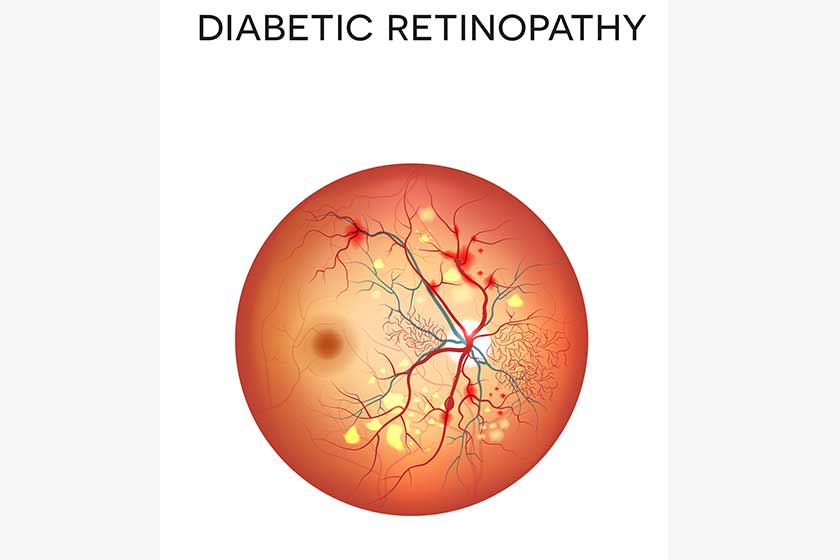Diabetic retinopathy in seniors is a serious condition that can lead to significant vision loss if not promptly addressed. Recognizing the early symptoms is crucial for timely intervention and effective management. Here, we explore seven key symptoms of diabetic retinopathy that your loved ones should not ignore.
Understanding Diabetic Retinopathy
Diabetic retinopathy occurs when high blood sugar levels cause damage to the blood vessels in the retina, the light-sensitive tissue at the back of the eye. This condition can develop in anyone who has diabetes, and the risk increases with age and the duration of diabetes. Regular eye examinations and early detection are essential for preventing severe vision problems.
Blurred Vision
Blurred vision is often one of the first symptoms of diabetic retinopathy in seniors that your loved ones may experience. High blood sugar levels can cause the lens of the eye to swell, leading to temporary blurriness. Over time, as the blood vessels in the retina become damaged, this blurriness can become more persistent.
If your family members notice that their vision is frequently blurry or that they have difficulty focusing, it’s important to seek medical advice. Early intervention can help manage blood sugar levels and prevent further damage to the retina.
Floaters in the Field of Vision
Floaters are small dark spots or lines that appear to drift through the field of vision. These are more than just a minor annoyance; they can be a sign of bleeding within the eye due to diabetic retinopathy. As blood vessels in the retina become damaged, they can leak blood into the vitreous humor, the gel-like substance that fills the eye.
The sudden appearance of floaters should not be ignored. Encouraging older adults to schedule an eye examination promptly can help identify the cause and begin appropriate treatment to prevent further vision loss.
Fluctuating Vision
Diabetic retinopathy can cause fluctuations in vision, where the elderly may experience clear vision one day and blurred or distorted vision the next. These fluctuations are often due to changes in blood sugar levels, which can affect the fluid balance in the eye and the swelling of the lens.
Maintaining stable blood sugar levels is crucial in managing diabetic retinopathy. If your family members experience frequent changes in their vision, it’s essential to consult with a healthcare provider to adjust their diabetes management plan and protect their eyesight.
Dark or Empty Areas in Vision
As diabetic retinopathy progresses, it can lead to the formation of dark or empty areas in the field of vision. This occurs when parts of the retina become deprived of oxygen due to damaged blood vessels, leading to the death of retinal cells.
Older adults may describe these areas as blind spots or patches where they cannot see. These symptoms indicate significant retinal damage and require immediate medical attention. Early treatment can help prevent further progression and preserve as much vision as possible.
Difficulty with Color Perception
Diabetic retinopathy can also affect color perception, making it difficult for the elderly to distinguish between colors. This symptom occurs when the macula, the part of the retina responsible for sharp and color vision, is affected by the disease.
If your family members notice that colors appear faded or that they have trouble distinguishing between similar colors, it’s important to seek an eye examination. Managing blood sugar levels and receiving appropriate treatment can help mitigate these effects and improve color vision.
Seeing Flashing Lights
Seeing flashing lights or sudden bursts of light in the peripheral vision can be a warning sign of diabetic retinopathy. These flashes are often caused by the pulling or detachment of the retina due to abnormal blood vessel growth and scar tissue formation.
Flashing lights can be a sign of retinal detachment, a serious complication that requires immediate medical intervention. If the elderly experience this symptom, it’s crucial to seek emergency eye care to prevent permanent vision loss.
Sudden Vision Loss
Sudden and severe vision loss is one of the most alarming symptoms of diabetic retinopathy. This can occur when there is significant bleeding in the eye or when the retina detaches from the back of the eye. Sudden vision loss is a medical emergency and requires immediate attention.
Encouraging your family members to have regular eye exams is essential for detecting and managing diabetic retinopathy before it reaches this critical stage. If they experience sudden vision loss, prompt treatment can make a significant difference in preserving their remaining vision.
Ensure the well-being of your loved ones by exploring our comprehensive care options. Schedule a tour today to see how our Assisted Living community can support their health and wellness. Let us be the partner in the care that your family needs.







